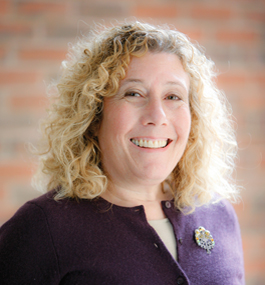Listening to Brain Injury Survivors

Laura S. Lorenz
by Laura S. Lorenz
The nationwide outpouring of concern about Congresswoman Gabrielle Giffords’ traumatic brain injury and her recovery is gratifying. Perhaps it will have a lasting impact, helping focus attention on the other five million Americans living with disabilities from brain injury.
For all our life-saving modern technology and medicine, we know little about brain injury survivors’ lives. How do they cope? How can they find new meaning and purpose in life, and how can we help them achieve their goals? Tessa Venell’s inspiring story shows that support from family, friends and a rehabilitation team — as well as personal determination — are essential to regain function and find new purpose after brain injury.
Since passage of the Traumatic Brain Injury Act in 1996, we have learned a great deal about the impact of traumatic brain injuries on people like Venell and their families. We have unfortunate opportunities to research the effects of blast injuries on military personnel who have served in Iraq and Afghanistan. And scientists are beginning to study the brains of football players who have developed early-onset dementia as a result of multiple concussions.
I have spent the last six years researching the lived experience of people with acquired brain injury. In my research, I have explored a dimension of healing not captured by the standard “treatment and cure” approach to brain injury, which relies almost exclusively on hospital care even though brain injury survivors return to their homes and communities long before recovery is complete.
We now know that the human brain retains plasticity throughout life and people with brain injuries can continue to improve many years after the trauma. However, policy and treatment have not kept up with research findings and experience from people’s lives. We chronically underfund disability and rehabilitation research, according to the Institute of Medicine. Many brain injury survivors have limited access to cognitive rehabilitation services, and services for people living with an injury for more than a year are even more limited or nonexistent. We fail to recognize the chronic nature of brain injury or support survivors where they do most of their healing: in homes and communities.
For my research, brain injury survivors take photographs to answer research questions: What is it like to live with a brain injury? What helps your healing? What slows you down? What do you want to tell others? What are your hopes for the future? Our conversations reveal stories of frustration, confusion and isolation — and stories of support, comfort and hope. People use their photos to show that they continue to heal even decades after their brain injuries.
We need to listen to what people like Tessa Venell and those with even mild brain injury tell us about their lives. Many of my research participants tell me that brain injury survivor support groups are important sources of community and hope. When these groups incorporate activities that support cognitive and emotional healing, they can help to fill the gap created in our medical model approach to brain injury rehabilitation.
Laura S. Lorenz is a senior research associate and lecturer in the Institute for Behavioral Health at the Heller School for Social Policy and Management. She is the author of “Brain Injury Survivors: Narratives of Rehabilitation and Healing.” She can be reached at www.lslorenz.com.
